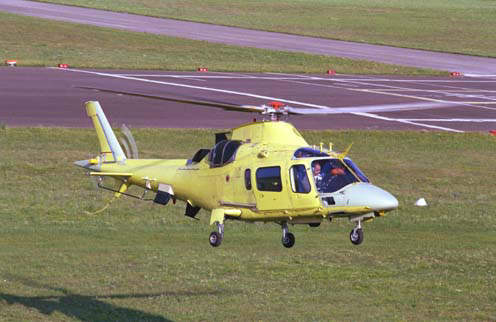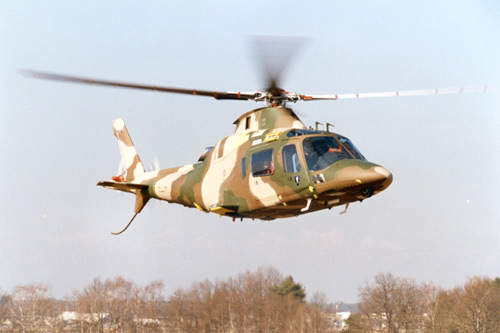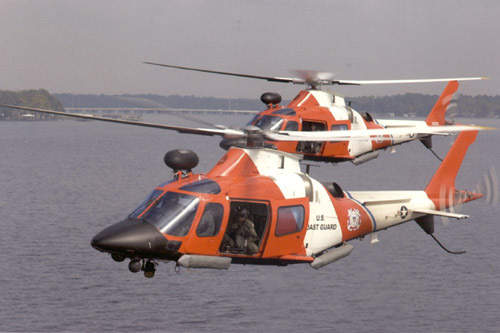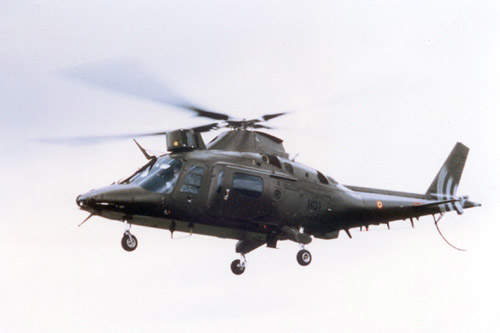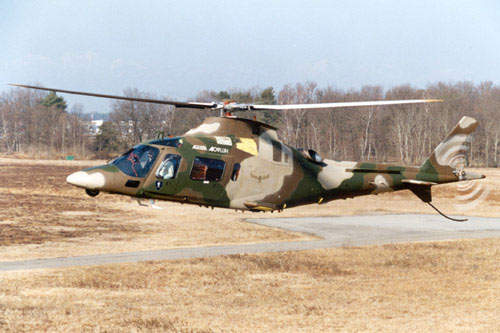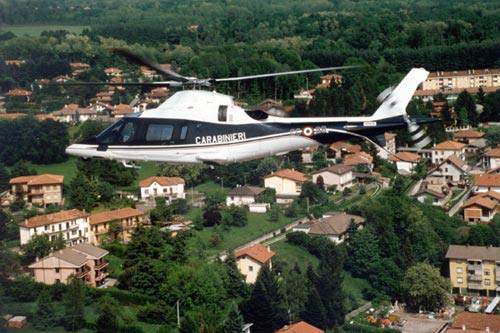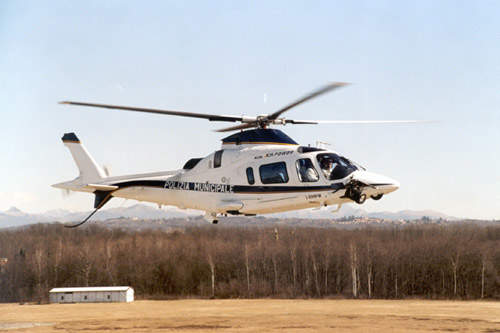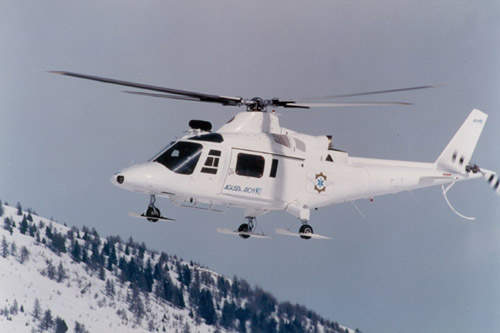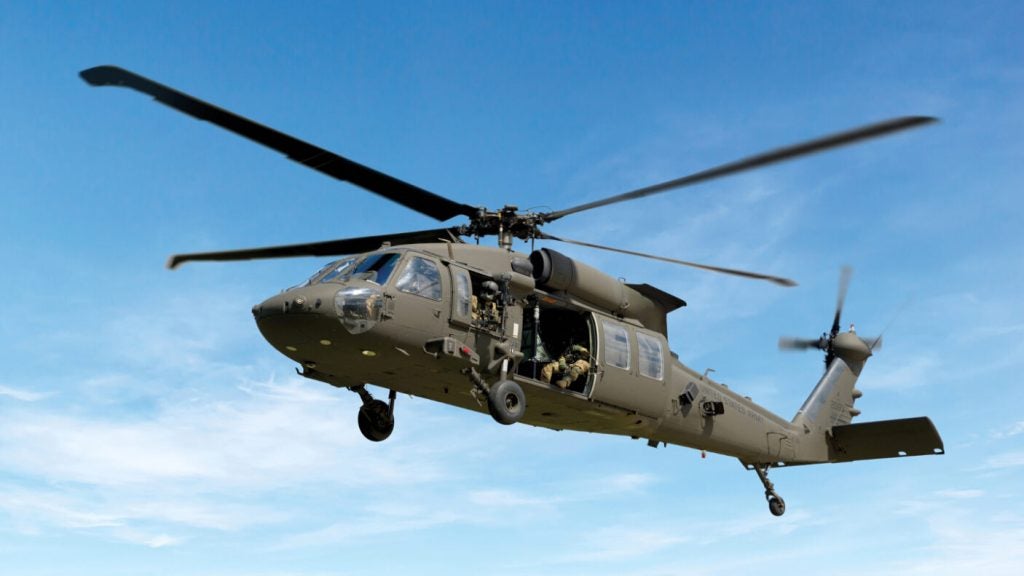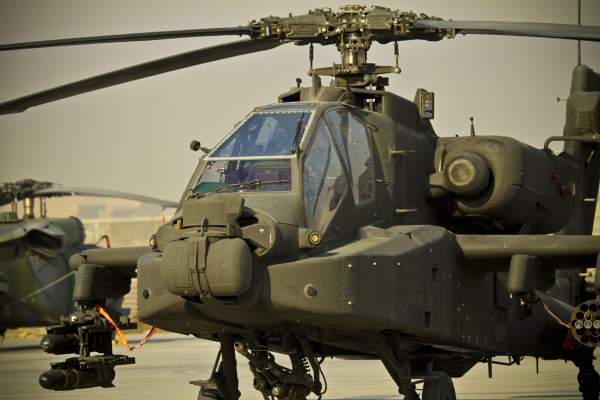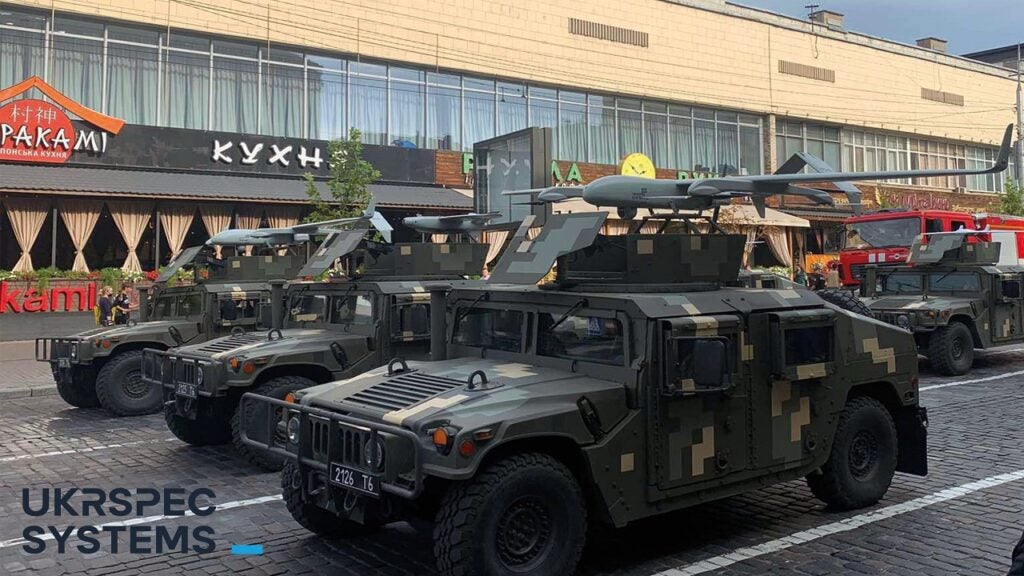
The A109M light, twin-engine multipurpose helicopter has been developed by AgustaWestland in Italy. The A109M is a military version of the A109 Power family of civil helicopters, which are available in VIP/corporate, EMS emergency services and law enforcement versions. Around 300 A109 Power helicopters have been ordered since the model’s entry into service in 1996.
The A109M features high engine power with FADEC (Full Authority Electronic Control) management, composite rotor head and blades, advanced avionics and cockpit integration. The helicopter is operated by a crew of one or two. The cabin can be fitted with a single or two stretcher installation for casualty evacuation. The maximum number of seats on board is eight.
A109M helicopter mission roles
The A109 was originally developed as an ambulance and rescue helicopter to operate in the mountainous regions of Switzerland. The helicopter can fly from critically situated landing spots in adverse climates and from roof helipads in densely populated areas.
The A109M can carry out various missions and operations in hot temperatures and high altitudes.
Missions include observation and reconnaissance, armed escort, search and rescue, troop / cargo transport, casualty evacuation, liaison and training.
A109M light helicopter orders and deliveries
In 1999, 30 (plus ten options) A109 LUH (light utility helicopter) were ordered for the South African Air Force. Thales Aerospace is supplying the avionics. The first four were delivered in October 2005. 20 A109M, designated Hkp 15, were ordered by Sweden in June 2001. The first two were delivered in February 2006. 12 Hkp 15A will be used by the Army and 8 Hkp 15B by the Swedish Navy.
Denel is building the airframes as part of a license production agreement with AgustaWestland. Eight A109 Powers have been delivered for the US Coastguard’s HITRON (Helicopter Interdiction Tactical Squadron) programme. The helicopters are designated MH-68A.
In October 2003, 11 A109 LOH were ordered by the Malaysian Ministry of Defence for observation, reconnaissance and tactical transport. The first made its maiden flight in June 2005 and was delivered in December 2005. The first three helicopters entered service with the Malaysian Army in February 2006 and deliveries concluded in September 2006.
In March 2006, three A109 Power helicopters entered service with the UK Royal Air Force, where they are being used for VIP transport and communications.
In February 2007, the Royal Australian Navy announced its intention to lease three A109 helicopters for training purposes. The helicopters are being leased from Raytheon Australia. Two are being supplied by AgustaWestland Italy and one from a civil operator in France.
In May 2008, New Zealand placed an order for five A109LUH for its training light utility helicopter requirement. The helicopters are used for training NH90 and SH-2G Seasprite helicopter pilots and operational support for government agencies including police and customs.
The A109 is also in service with the Argentine Army (five), Belgian Air Force (32), Italian Army (25), Nigerian Air Force (seven) and the Venezuelan Army (seven).
A109M multipurpose helicopter design
The helicopter airframe consists of a lightweight aluminium alloy and honeycomb structure with high crashworthiness. Two large sliding doors provide easy access and cargo operation and are in-flight operable. There are two separate pilot’s doors. Maintenance steps and hinged inspection panels are provided for quick maintenance. The long tailboom configuration provides high yaw control for operation in strong winds.
The tricycle-type wheeled landing gear is fitted with air and oil shock absorbers for ground mobility and operation on rough terrain. Energy absorbing struts provide increased crashworthiness. A swivelling forward wheel gives easy ground manoeuvrability.
The four-bladed, fully articulated main rotor has low vibration, low flicker and reduced noise level characteristics. The composite main rotor blades are ballistic tolerant for high survivability and reliability. The rotor is negative-g capable for high manoeuvrability. The tail rotor is a two-bladed stainless steel semi-rigid type.
A109M cockpit design
The cockpit has an ergonomic instrument panel with provision for role and mission dedicated display and control instrumentation. The cockpit can be night vision goggle compatible. The pilot has a suite of vision equipment comprising a roof mounted gyrostabilised sight, forward looking infrared and television sensors and night vision goggles.
An optional Cockpit Management System (CMS) is provided for monitoring and operating different avionics, via one or more centrally located control and display units. The information is organised in logical steps to allow the pilot to concentrate on his main mission. The CMS reduces the weight of the avionics payload and has capacity for additional or alternative avionic systems.
The avionics suite includes an automatic direction finding navigation aid (ADF), istance measuring equipment (DME), a global positioning system (GPS), identification friend or foe (IFF), a radar altimeter, an emergency locator transponder (ELT), a VHF omnidirectional radio ranger (VOR), ground speed meter and inertial location system.
The flight control system includes a collective, cyclic and anti-torque system. The cyclic and collective controls are powered by two hydraulic systems. The anti-torque control system is hydraulically powered. A dual redundant three-axis stability augmentation system is fitted as an option.
A109M weapons and countermeasures
The Al09M’s low vibration and high stability characteristics provide an platform for target detection and target tracking which maximises the effectiveness of the airborne antitank system. The helicopter can be fitted with the Helitow anti-tank missile system which has two TOW missile launchers with two or four missiles each launcher.
The Systems & Electronics (formerly ESCO) Helitow anti-tank missile system can acquire, track and defeat stationary or moving armoured targets during day and night.
The installation of the Helitow system rapidly converts the utility helicopter to anti-armour mission configuration. The launchers can carry TOW, ITOW, TOW2 and TOW2A missiles.
The helicopter can carry externally: 2.75in or 81mm rocket pods with seven or 12 tubes; a rocket machine gun pod (RMP) with three 70mm rockets and a 12.7mm machine gun with 200 rounds; machine gun pods with a 12.7mm machine gun with 250 rounds of ammunition.
The internal armament of the helicopter comprises a pintle mounted 7.62mm machine gun and a door gunner post for a 12.7mm general purpose machine gun.
The A109M helicopter can be equipped with a radar warning receiver, laser warner, infrared jamming system and chaff and flare dispenser.
FADEC engines
The helicopter is equipped with two side-by-side Pratt & Whitney PW-206C or Turbomeca Arrius 2K1 engines with full authority digital electronic control (FADEC). Each engine is equipped with independent fuel and oil systems and independent engine controls.
The transmission system is rated at 900hp for improved high-temperature and high-altitude performance.
For enhanced safety and reliability the helicopter has a 640hp single engine emergency rating and the dry run capability is 30 minutes, allowing the pilot the opportunity to retreat to land in a place of safety in the event of oil loss.
There are three fuel systems configurations: three cells of 160 USgal (605l), four cells of 188 USgal (710l) and five cells of 230 USgal (870l). A crashworthy fuel system with closed circuit refuelling and self-sealing fuel tanks is optional.
Flight control hydraulic systems
The helicopter is fitted with two independent flight control hydraulic systems each capable of operating main actuators in case of failure of the other system. The utility hydraulic system has two accumulators (a normal and an emergency accumulator) to operate the rotor brake, the wheel brakes and the nose wheel centring device.
AC and DC electrical systems
Two fully independent AC and DC electrical systems are each capable of supplying all essential loads in case of failure the other system. The electrical system comprises two 160 amp 28V DC self cooled starter generators and 27 Ah 24V nickel-cadmium batteries. An optional AC system comprises two 250VA, 115/26V AC, 400Hz static inverters.
Armament and equipment options
A wide range of armament and utility equipment is available for multiple armed and utility missions including: a bleed air heater and environmental control unit, an external 1,000kg cargo hook, a 200kg or 270kg rescue hoist, snow skis, slump protection pads, emergency floats, an oxygen system, engine air particle separator and an engine fire extinguisher.
A109M survivability systems
For increased survivability the helicopter has armoured seats and all critical systems are duplicated and separated. Infrared absorbing paint is used to minimise the helicopter’s vulnerability to detection by thermal sensors. The helicopter has a small silhouette, which gives a low visual and radar signature. A wire cutter is installed on the roof of the cockpit just above the windshield and in front of the vision pod.

